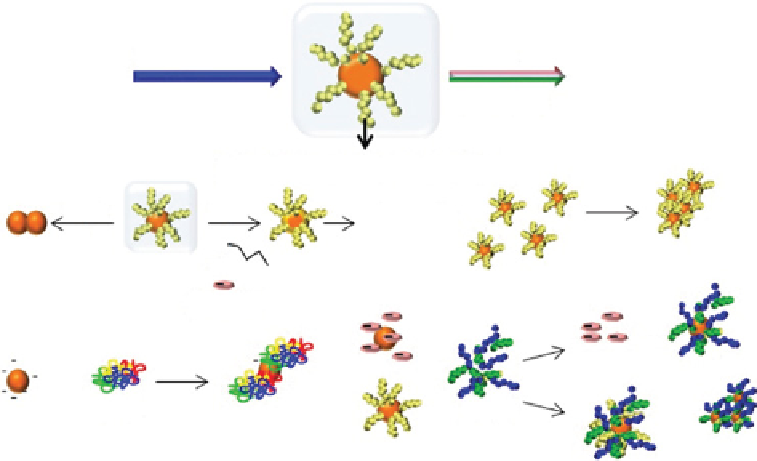Environmental Engineering Reference
In-Depth Information
nanoscale features affect their behavior and interactions with other environmentally relevant parameters?
(ii)
What transfor-
mations are likely to occur in natural systems?
(iii)
How do the transformations affect the NMs' properties, behaviors, and
bioavailability?
These questions will be addressed by discussing two interdependent essential issues: physicochemical trans-
formations of the NMs and their possible interactions when dispersed on a matrix. The discussion of the environmental fate of
a NM, which will determine the NM species to which ecosystems and the general population will be exposed to, will ulti-
mately facilitate ecotoxicologists in their choice of appropriated toxicological experiments (including the organisms and the
exposure route).
The discussion presented in this chapter will be focused on metal-containing NMs for two main reasons: (1) for comparison
with the well-established methodology existing for toxicological experiments with metal ions, and (2) for changes needed in
the methodology as the metal-containing NMs are toxic
per se
and simultaneously a source of metal ions. Carbon-based NMs
will not be addressed since the quantification methodologies for these NMs are still limited and much less sensitive when
compared to those available for metal-containing NMs.
32.2
fate of nms In solUtIon
32.2.1
physicochemical transformations
The reliable detection, quantification, and characterization of NMs is of crucial importance for the exposure and risk assessment,
which in turn provides a justifiable and robust regulatory framework that will allow the continued innovation and development
of the nanotechnology industry. State-of-the-art analytical techniques and complementary analytical methodologies for the
characterization of NMs are under development [3]. An additional set of challenges emerges when the objective is to quantify
and characterize NMs in complex matrices, including natural waters, soils, sediments, and biological tissues because of the
environmentally and biologically relevant concentrations involved. This is an area of intensive research where the development
of new and/or more robust and sensitive techniques and methodologies is urgently necessary.
Properties such as composition, shape, and structure vary greatly according to the type of NM and are also expected to vary
along the NM's life cycle. These properties are expected to directly determine the NM's environmental fate and transformations
that occur during the NM's life cycle. Other factors affecting the stability of an NM include matrix effects, changes in pH or
ionic strength, impurities effects, degradation of coatings, and functionalization. Representative chemical and physical trans-
formations of metal-containing NMs include (Fig. 32.1) (i) dissolution, (ii) homoaggregation, and (iii) heteroaggregation.
Effects
NM production
Behaviors
Chemical/physical transformations
Light
O
2
(a)
(b)
M
z
+
-S
or
(Ligands)
+
-
+
or
(c)
-
(d)
-
+
-
-
(BM)
(NOM)
fIgUre 32.1
Representative chemical and physical transformations of metal-containing NMs: (a) photodegradation of coatings that can
lead to aggregation, and oxidation, thiol ligands and other ligands that can promote dissolution, (b) homoaggregation, (c) adsorption of bio-
macromolecules (BM) that can affect the aggregation, (d) adsorption of NOM that can displace smaller ligands and promote stabilization or
flocculation, or that can lead to poorly characterized heterogeneous mixed polymer-NOM layers.

